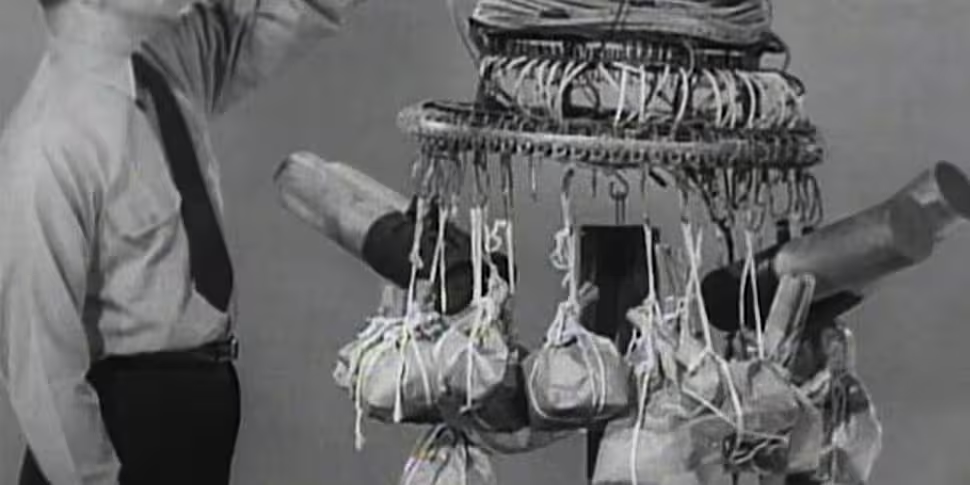In their attempt to bomb the mainland US, the Japanese army launched thousands of high-altitude hydrogen balloons into the upper atmosphere, relying on westerly winds to drift them to the American west coast.
Although a tactical failure, the fu-go offensive claimed the lives of six Americans, and was hushed by US authorities. Seán will be chatting to Ross Coen, a Seattle native, whose book Fu-Go: The Curious History of Japan’s Balloon Bomb Attack on America reveals the truth behind Japan’s inflated intifada.
Listen in live at 2pm: http://www.newstalk.com/player/
Balloon bombings might well be a strange approach to airborne warfare, but are not the most unusual to come out of World War II. Here are five of the oddest weapons ever created during the conflict:
- Bat bombs
An American proposal after Pearl Harbour was bombed, tiny incendiary devices would be attached to the body of thousands of bats. The creatures would be then dropped from a bomber to roost in buildings all over Japan. Then, the timer-delayed bombs would explode.
In 1944, the project was abandoned after several bats in a trial took refuge in the test facility’s warehouses, burning them to the ground.

[StrayBoots]
- Project Habakkuk
Like something out of a Connery-era Bond movie, this project hoped to hollow out a giant iceberg, levelling the top and using it as a giant, floating, ice-fortress aircraft carrier.
Allied forces hoped to fight back from U-Boat domination of the Atlantic with a mobile landing facility, but ice proved a fickle friend, cracking and splitting whenever the US army tried to shape it. The giant refrigerator had to be abandoned in 1944, when the effectiveness of conventional aircraft carriers was proving too hard to ignore.

- Midget Submarines
Also known as the ‘X-Class’, these Royal Navy submarines were nearly 16m long, carrying a crew of four, and were pulled along by a regular-sized submarine with a tow rope.
The mini-subs greatest mission came when the Royal Navy faced off with the Bismarck warship, with six ‘X-Class’ included in the mission. Two were destroyed accidentally en route, and another had serious mechanical problems. Of the remaining three, one was sunk in the attack, but the other two managed to pull off their mission.

[Wiki Commons]
- Pigeon-guided missiles
First proposed by B.F. Skinner, the father of behavioural psychology, the idea here was to condition a pigeon to deliver a missile payload with its homing accuracy.
The missile would include a small screen, and the pigeon – trained to recognise its target – would push levers to make sure the site was centred in the screen. The pigeons proved very adept at the conditioning experiment, proven to be able to correct missiles from swerving off target. But the project was eventually scrapped in favour of electronic guidance.

[Scrapsandsnippets]
- Anti-tank dogs
The Soviet Union deployed a unit of dogs to take down German Panzers as they invaded in 1941.
The dogs were trained to position themselves under tanks, where food was kept during their training. Then, strapped with a 10kg mine, they were released as the German tanks pushed further and further into Soviet territory.
But man’s best friend didn’t prove very successful as a suicide bomber; the dogs were often scared by gunfire, running back to their owners and detonating then. The Soviets’ claim that 300 German tanks were destroyed this way have been widely disputed.

[TodayIFoundOut]









